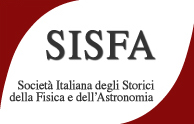Speaker
Description
One of the most significant discoveries of the NanoWorld are Carbon Nanotubes. Crossing the history of nanotubes through its historiographical––and––scientific literature, we analysed a) Radushkevich and Lukyanovich’s research On the Carbon Structure Formed by the Thermal Decomposition of Carbon Monoxide on an Iron Contact. In 1952, they observed and described tubular structures of carbon, through electron microscopy; b) Structural Improvement of Carbon Fibers Prepared form Benzene by Endo, Koyama and Hishiyama. In 1976, they developed and reinforced carbon tubular structures using benzene aromatic rings. In 1985, Kroto, Heath, O'Brien, Curl, Liu and Smalley enriched carbon studies, discovering the Buckminsterfullerene, molecule of almost spherical shape and formed by 60 carbon atoms. This discovery was published in C60: Buckminsterfullerene obtaining Nobel Chemistry Prize in 1996, as well. In 1991, in Helical Microtubules of Graphitic Carbon Iijima, the father of carbon nanotubes discovery, described needle–like structures with multiple coaxial walls; the article dealt with helical–walled carbon nanotubes. In this talk, we present a historiographical debate into history of Nanosciences––Nanotechnology on the Carbon Nanotubes studies (1950s–1990s), also looking back to post–Maxwellan methods in the end of 19th century. The content of this presentation is part of a current doctoral research (AD) at Lille University (supervised by RP) in History of Nanoscience and Nanotechnology, since 1950s.

